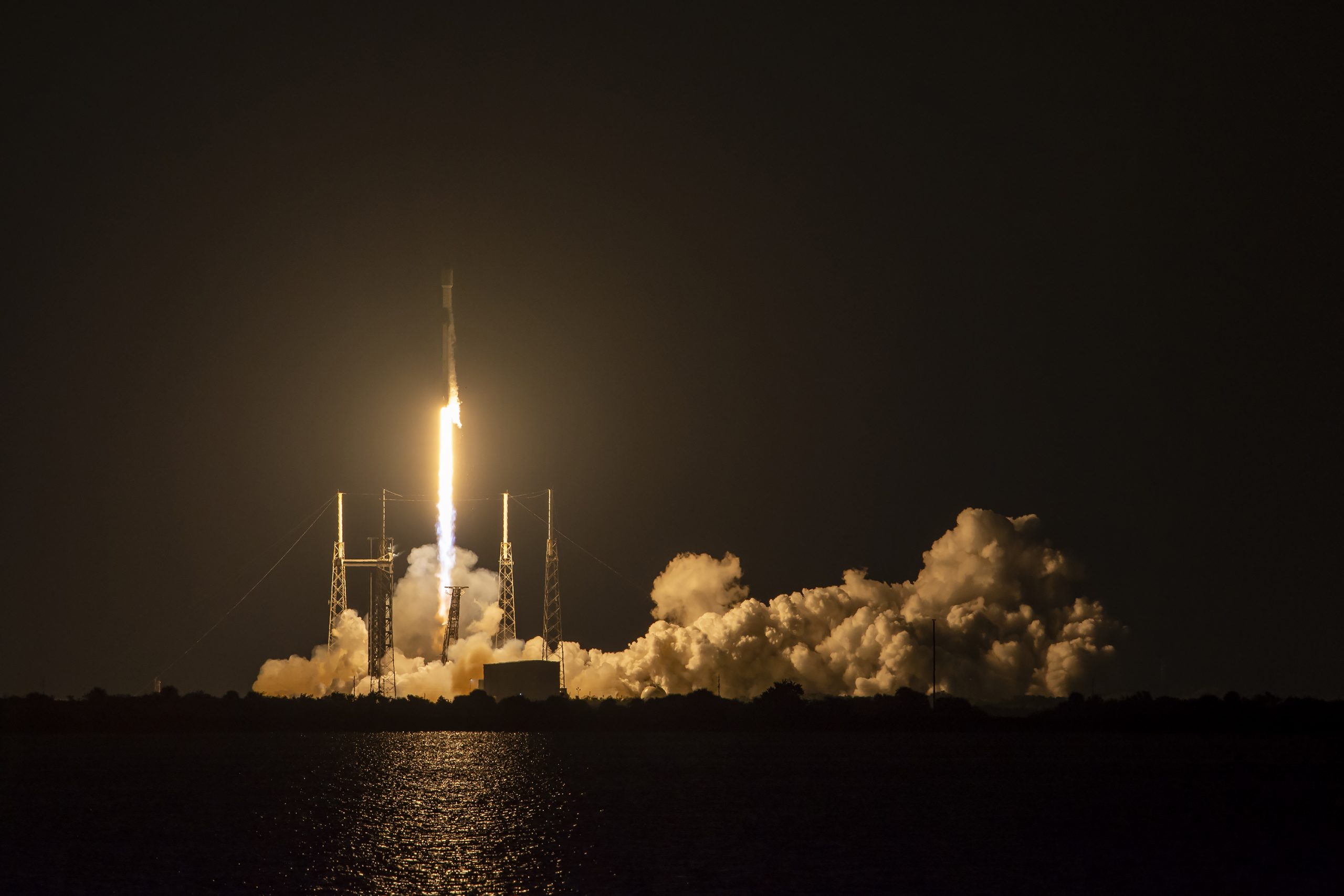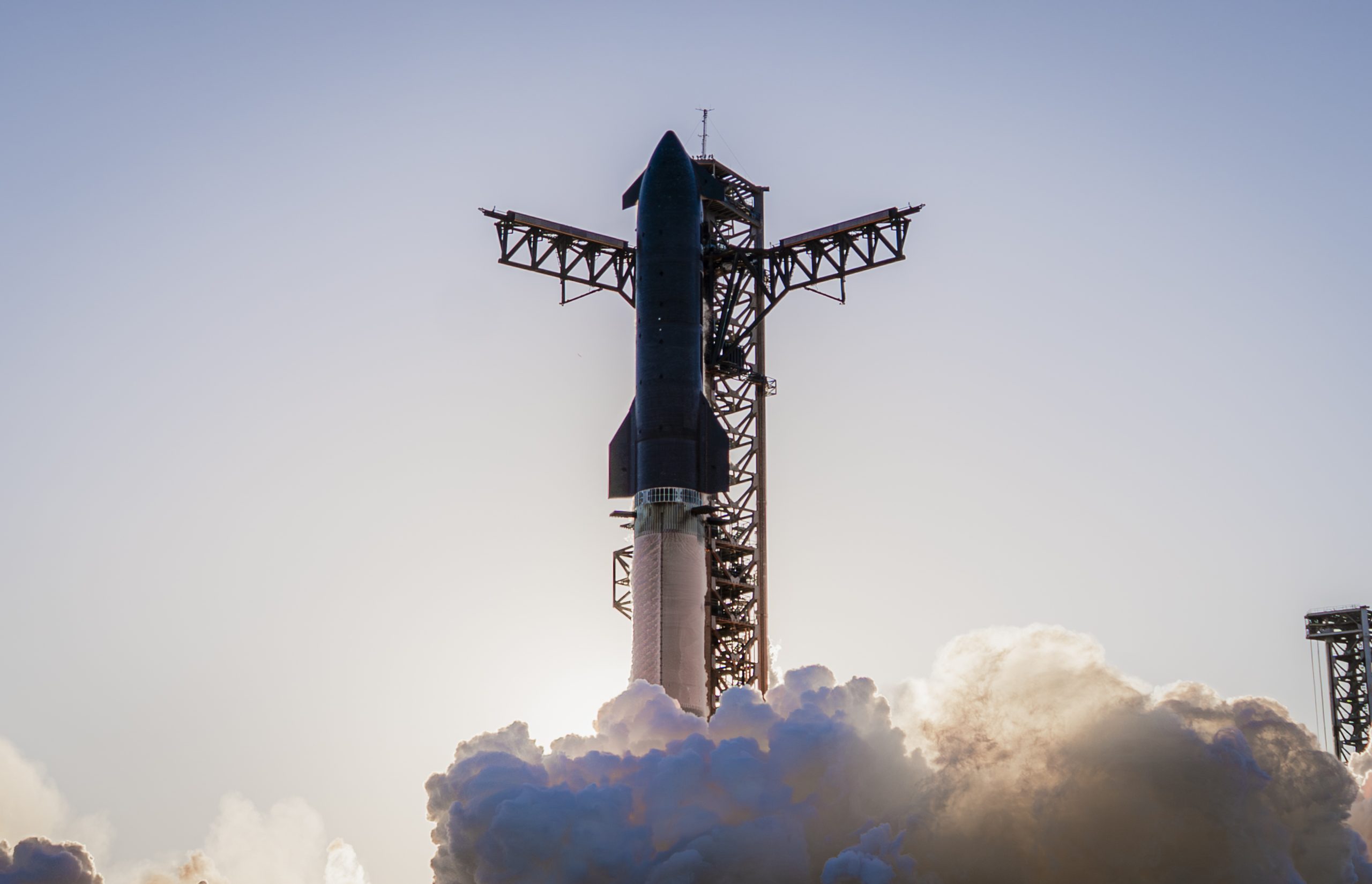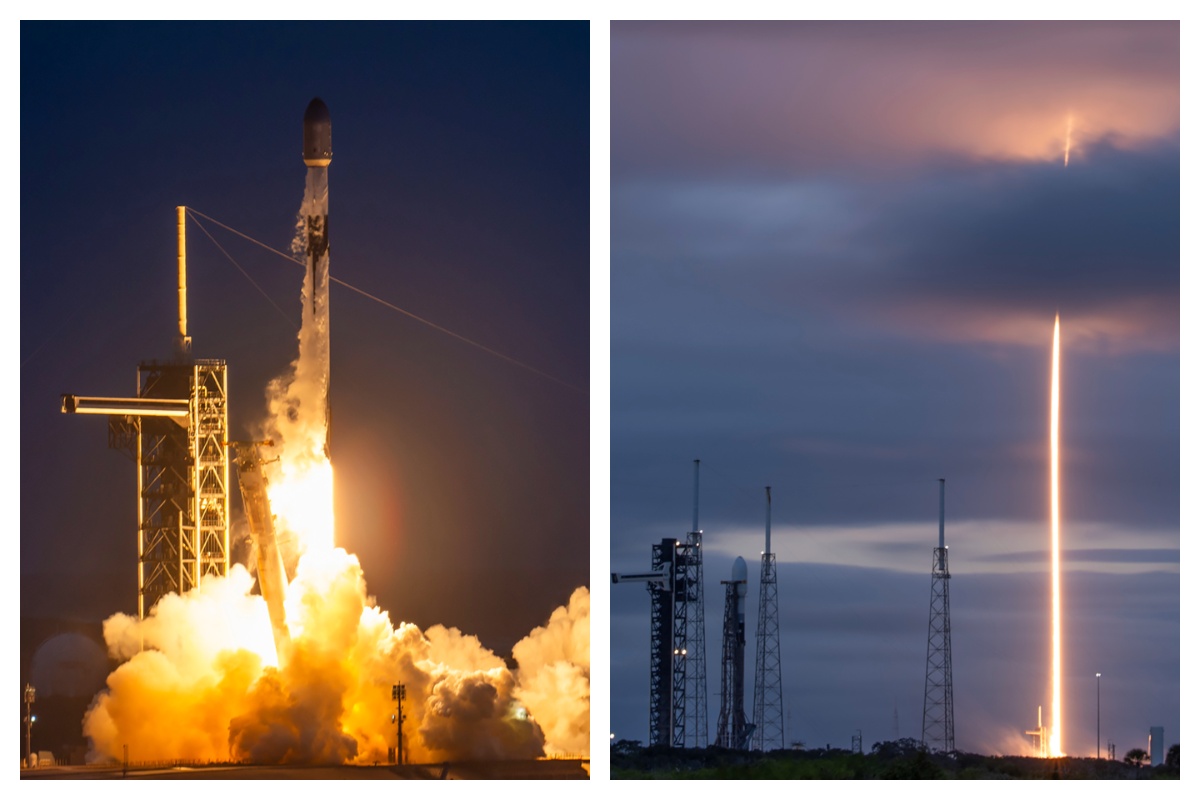SpaceX
Ukraine seeks Starlink alternatives from the EU

Ukraine is exploring EU satellite alternatives to Starlink, driven by concerns over Elon Musk’s unpredictability. Starlink remains vital for Ukraine’s battlefield connectivity and cannot be easily replaced. While the European Union has started developing Starlink alternatives, they have not quite reached SpaceX’s capacity to provide internet connection.
Starlink’s Critical Role and Vulnerabilities
Starlink’s 7,000+ satellite network provides essential connectivity for Ukraine’s military. However, SpaceX CEO Elon Musk’s influence has raised strategic concerns.
“Elon Musk is, in fact, the guardian of Ukraine’s connectivity on the battlefield. And that’s a strategic vulnerability,” warns Arthur De Liedekerke, Senior Director of European Affairs for Rasmussen Global.
Opinions of Musk have started to influence dealings with any of his companies, including SpaceX and Tesla. Starlink has not escaped criticism due to its relationship with Musk, resulting in a few governments seeking alternatives to SpaceX’s internet services.
For instance, the German military has announced plans to develop a Starlink alternative. Kyiv and the EU are also seeking options to reduce reliance on Starlink.
EU’s Govsatcom as a Near-Term Option
Member of the EU Parliament (MEP) Christophe Grudler pitched the European Union’s Govsatcom system as a viable alternative to Starlink for Ukraine.
“It is clear that if Starlink decides to cut the signal today, we have options, in particular with Govsatcom, which is the European network that we have brought into service and which, from June, will make it possible to supplement Starlink’s missing signal in Ukraine, if necessary,” he said.
Grudler affirmed: “The European Union is very committed to helping Ukraine, so there would certainly be agreement from all the Member States to come to Ukraine’s aid if it no longer had a Starlink signal in the future.”
However, De Liedekerke pointed out that GovSatcom was made for government use. He noted that “GoveSatcom is a governmental secure satellite communications and it’s essentially to provide reliable, secure, strategically autonomous networks for communication services between governments in the EU. It couldn’t replace the kind of battlefield connectivity that we’re discussing for Ukraine. So it’s not a silver bullet at the moment.”
Eutelsat’s Competitive Edge
Eutelsat, a Franco-British operator, offers a low-Earth orbit network with 630 satellites and 35 geostationary ones, though it trails Starlink’s scale. It has 2,000 terminals deployed in Ukraine and 14,000 more planned to deploy. Starlink has 40,000 terminals in Ukraine, used by the military and civilians.
Price is another factor to consider when seeking a Starlink alternative. Eutelsat’s €9,000 terminals are pricier than Starlink’s €500 units.
“Eutelsat is our European champion, one that has convincing functioning solutions. And one that we need to be able to support through funding and political will,” De Liedekerke said, noting its political independence from the U.S.
Iris2 as a Future Solution
The EU’s Iris2 project is another Starlink alternative Ukraine might consider. The Iris2 project is a 290-satellite constellation, promising secure, low-latency connectivity by 2030, with partial operations by 2028.
“From 2028, we will have an operational Iris2 constellation that will be able to provide telecommunications services to all the Member States that so wish. I would add that this will be the first time we have had a constellation secured with post-quantum cryptography, so cyber-attacks will not be possible on this constellation. It will be a world first with an ultra-secure signal, which is not the case with the Starlink signal either,” Grudler said. ‘
Led by the SpaceRISE consortium, Iris2 offers a long-term alternative, though its timeline limits immediate impact.
Strategic Diversification
De Liedekerke has stressed the need for options aside from Starlink.
“It’s about having options. It’s about not having a single point of failure. It’s being able to say no to one and still be online. And today, we’re not in a situation where we can do that. We’ve let Ukraine’s war zone connectivity be in the hands of one man…that’s a strategic vulnerability.
By having options, by having alternatives, by diversifying our partnerships, we avoid that single point of failure.”
Ukraine’s pursuit of EU solutions aims to ensure battlefield resilience. However, the EU has some way to go before it can match Starlink’s reach.

Investor's Corner
SpaceX IPO is coming, CEO Elon Musk confirms
However, it appears Musk is ready for SpaceX to go public, as Ars Technica Senior Space Editor Eric Berger wrote an op-ed that indicated he thought SpaceX would go public soon. Musk replied, basically confirming it.

Elon Musk confirmed through a post on X that a SpaceX initial public offering (IPO) is on the way after hinting at it several times earlier this year.
It also comes one day after Bloomberg reported that SpaceX was aiming for a valuation of $1.5 trillion, adding that it wanted to raise $30 billion.
Musk has been transparent for most of the year that he wanted to try to figure out a way to get Tesla shareholders to invest in SpaceX, giving them access to the stock.
He has also recognized the issues of having a public stock, like litigation exposure, quarterly reporting pressures, and other inconveniences.
However, it appears Musk is ready for SpaceX to go public, as Ars Technica Senior Space Editor Eric Berger wrote an op-ed that indicated he thought SpaceX would go public soon.
Musk replied, basically confirming it:
As usual, Eric is accurate
— Elon Musk (@elonmusk) December 10, 2025
Berger believes the IPO would help support the need for $30 billion or more in capital needed to fund AI integration projects, such as space-based data centers and lunar satellite factories. Musk confirmed recently that SpaceX “will be doing” data centers in orbit.
AI appears to be a “key part” of SpaceX getting to Musk, Berger also wrote. When writing about whether or not Optimus is a viable project and product for the company, he says that none of that matters. Musk thinks it is, and that’s all that matters.
It seems like Musk has certainly mulled something this big for a very long time, and the idea of taking SpaceX public is not just likely; it is necessary for the company to get to Mars.
The details of when SpaceX will finally hit that public status are not known. Many of the reports that came out over the past few days indicate it would happen in 2026, so sooner rather than later.
But there are a lot of things on Musk’s plate early next year, especially with Cybercab production, the potential launch of Unsupervised Full Self-Driving, and the Roadster unveiling, all planned for Q1.
News
SpaceX reportedly mulling IPO, eyeing largest of all time: report
“I do want to try to figure out some way for Tesla shareholders to participate in SpaceX. I’ve been giving a lot of thought to how to give people access to SpaceX stock,” Musk said.

SpaceX is reportedly mulling an initial public offering, eyeing what would be the largest valuation at the time of availability of all time, a new report from Bloomberg said on Tuesday.
It is one of many reports involving one of Elon Musk’s companies and a massive market move, as this is not the first time we have seen reports of an IPO by SpaceX. Musk himself has also dispelled other reports in the past of a similar nature, including an xAI funding round.
SpaceX and Musk have yet to comment on the report. In the past, untrue reports were promptly replied to by the CEO; this has not yet gained any response, which is a good sign in terms of credibility.
However, he said just a few days ago that stories of this nature are inaccurate:
“There has been a lot of press claiming SpaceX is raising money at $800B, which is not accurate. SpaceX has been cash flow positive for many years and does periodic stock buybacks twice a year to provide liquidity for employees and investors. Valuation increments are a function of progress with Starship and Starlink and securing global direct-to-cell spectrum that greatly increases our addressable market. And one other thing that is arguably most significant by far.”
There has been a lot of press claiming @SpaceX is raising money at $800B, which is not accurate.
SpaceX has been cash flow positive for many years and does periodic stock buybacks twice a year to provide liquidity for employees and investors.
Valuation increments are a…
— Elon Musk (@elonmusk) December 6, 2025
Musk has discussed a potential IPO for SpaceX in recent months, as the November 6 shareholder meeting, as he commented on the “downsides” of having a public company, like litigation exposure, quarterly reporting pressures, and other inconveniences.
Nevertheless, Musk has also said he wants there to be a way for Tesla shareholders to get in on the action. At the meeting in early November, he said:
“I do want to try to figure out some way for Tesla shareholders to participate in SpaceX. I’ve been giving a lot of thought to how to give people access to SpaceX stock.”
Additionally, he added:
“Maybe at some point., SpaceX should become a public company despite all the downsides of being public.”
Musk has been historically reluctant to take SpaceX public, at times stating it could become a barrier to colonizing Mars. That does not mean it will not happen.
Bloomberg’s report cites multiple unidentified sources who are familiar with the matter. They indicate to the publication that SpaceX wants to go public in mid-to-late 2026, and it wants to raise $30 billion at a valuation of around $1.5 trillion.
This is not the first time SpaceX has discussed an IPO; we reported on it nine years ago. We hope it is true, as the community has spoken for a long time about having access to SpaceX stock. Legendary investor Ron Baron is one of the lucky few to be a SpaceX investor, and said it, along with Tesla, is a “lifetime investment.”
Tesla bull Ron Baron reveals $100M SpaceX investment, sees 3-5x return on TSLA
The primary driver of SpaceX’s value is Starlink, the company’s satellite internet service. Starlink contributes 60-70 percent of SpaceX’s revenue, meaning it is the primary value engine. Launch services, like Falcon 9 contracts, and the development of Starship, also play supporting roles.
News
SpaceX reaches incredible milestone with Starlink program

SpaceX reached an incredible milestone with its Starlink program with a launch last night, as the 3,000th satellite of the year was launched into low Earth orbit.
On Monday, SpaceX also achieved its 32nd flight with a single Falcon 9 rocket from NASA’s Kennedy Space Center.
The mission was Starlink 6-92, and it utilized the Falcon 9 B1067 for the 32nd time this year, the most-used Falcon booster. The flight delivered SpaceX’s 3000th Starlink satellite of the year, a massive achievement.
There were 29 Starlink satellites launched and deployed into LEO during this particular mission:
Falcon 9 launches 29 @Starlink satellites from Florida pic.twitter.com/utKrXjHzPN
— SpaceX (@SpaceX) December 9, 2025
SpaceX has a current goal of certifying its Falcon boosters for 40 missions apiece, according to Spaceflight Now.
The flight was the 350th orbital launch from the nearby SLC-40, and the 3,000 satellites that have been successfully launched this year continue to contribute to the company’s goal of having 12,000 satellites contributing to global internet coverage.
There are over five million users of Starlink, the latest data shows.
Following the launch and stage separation, the Falcon 9 booster completed its mission with a perfect landing on the ‘Just Read the Instructions’ droneship.
The mission was the 575th overall Falcon 9 launch, highlighting SpaceX’s operational tempo, which continues to be accelerated. The company averages two missions per week, and underscores CEO Elon Musk’s vision of a multi-planetary future, where reliable connectivity is crucial for remote work, education, and emergency response.
As Starlink expands and works toward that elusive and crucial 12,000 satellite goal, missions like 6-92 pave the way for innovations in telecommunications and enable more internet access to people across the globe.
With regulatory approvals in over 100 countries and millions of current subscribers, SpaceX continues to democratize space, proving that reusability is not just feasible, but it’s also revolutionary.








